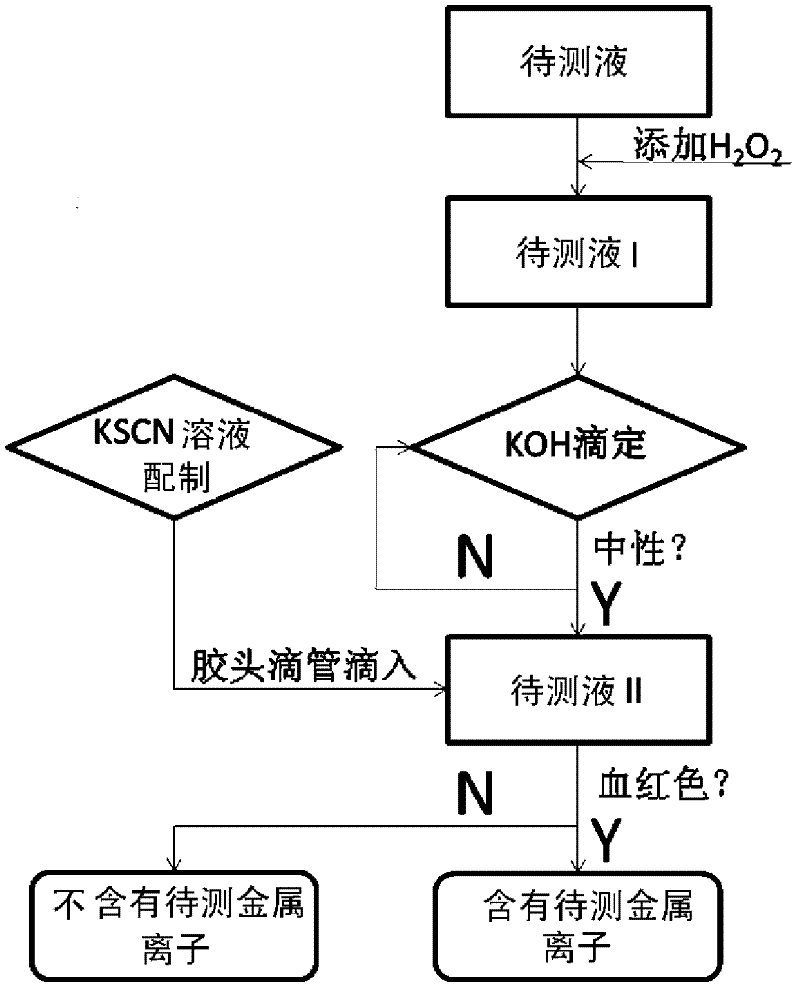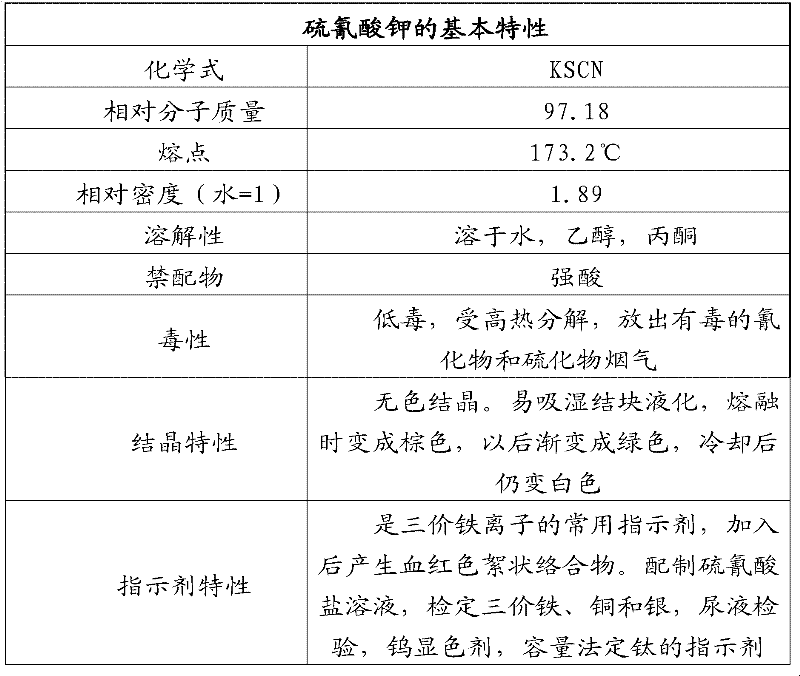Wet process metal ion detection method for solar cell
A technology of solar cells and metal ions, which is applied in the direction of analyzing materials through chemical reactions and analyzing materials through observation of the influence of chemical indicators, which can solve problems such as inability to detect, and achieve reliability and eliminate inaccuracies Effect
- Summary
- Abstract
- Description
- Claims
- Application Information
AI Technical Summary
Problems solved by technology
Method used
Image
Examples
Embodiment 1
[0051] Embodiment 1: as figure 1 , 2 Shown; Based on the basic physical and chemical properties of the chemical reagent used in the present invention above, design the principle block diagram of the present invention as figure 1 shown.
[0052] The oxidation of the liquid to be tested is mainly achieved by adding highly oxidizing H to the liquid to be tested. 2 o 2 , to oxidize the low-valence metal ions that may exist in the test solution to the highest valence state without affecting the acidity and alkalinity, such as Fe 2+ Oxidized to Fe 3+ , thereby excluding the possible presence of Fe 2+ The impact on the test results (because KSCN has no obvious phenomenon when it encounters ferrous ions, it immediately turns red when it encounters ferrous ions, and can only detect Fe 3+ ions, Fe cannot be detected 2+ ), while not affecting the final determination of whether the liquid to be tested contains metal ions.
[0053] Acid-base titration mainly uses the KOH titration ...
Embodiment 2
[0071] Alternatives to the present invention:
[0072] 1. Alkaline titration: Titrate the solution to be tested to neutral.
[0073] 2. Potassium ferricyanate detection: detection of Fe with potassium ferricyanate 2+ .
[0074] 3. Potassium thiocyanate detection: detection of Fe with potassium thiocyanate 3+ .
[0075] Along the train of thought of the present invention, other people can carry out metal ion (Fe 2+ , Fe 3+ ) detection. That is: first, through alkaline titration, the acidity and alkalinity of the solution to be tested is controlled at neutral, eliminating the inaccurate test results caused by acidic conditions and the possible hazards of ferricyanic acid and thiocyanic acid; Potassium is used to detect Fe2+, and observe whether a ferrous ferricyanide precipitate (Tengshi blue) with a characteristic blue color is formed
[0076] 3Fe 2+ +[Fe(CN)6] 3- =Fe 3 [Fe(CN) 6 ] 2 ↓
[0077] Finally, carry out the detection of Fe3+ with potassium thiocyanate, ob...
PUM
 Login to View More
Login to View More Abstract
Description
Claims
Application Information
 Login to View More
Login to View More - R&D
- Intellectual Property
- Life Sciences
- Materials
- Tech Scout
- Unparalleled Data Quality
- Higher Quality Content
- 60% Fewer Hallucinations
Browse by: Latest US Patents, China's latest patents, Technical Efficacy Thesaurus, Application Domain, Technology Topic, Popular Technical Reports.
© 2025 PatSnap. All rights reserved.Legal|Privacy policy|Modern Slavery Act Transparency Statement|Sitemap|About US| Contact US: help@patsnap.com



